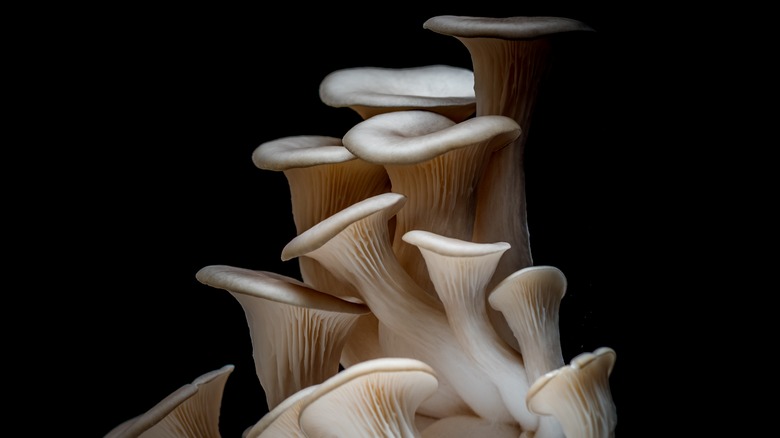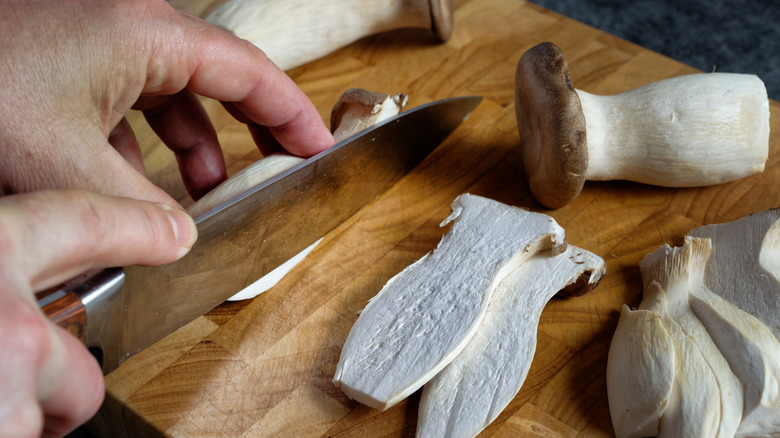Should You Remove Oyster Mushroom Stems?
Mastering the art of the mushroom can be difficult — from not harvesting inedible lookalikes to how they should be cooked. Even preparing the fungi comes with its own set of challenges. You may frequently remove the stems when making dishes like stuffed cremini caps, but this step isn't necessary with all mushrooms. Whether you remove the stems or toss them is variety dependent; where, then, do oyster mushroom stems stand?
Part of the Pleurotus genus, Healthline explains that oyster mushrooms are a gilled fungus that encompass about 40 different varieties, all of which are edible according to Mushroom Appreciation. The most popular types are the American oyster mushroom and the king oyster mushroom, both of which are rich in nutrients and antioxidants. Grown either in the wild on hardwood logs or commercially on blocks of straw or sawdust, the Fresh Cap explains that while most oyster varietals grow in large clusters, some may also grow singularly, as is the case with king oyster mushrooms.
Despite the common belief that fungi should never be rinsed under water due to their ability to absorb moisture, Serious Eats explains that a mere 2% of liquid will be absorbed, which won't make a significant difference when cooking. However, the one thing that you should pay attention to during prep is how to handle mushroom stems, especially when it comes to clustered oyster mushrooms.
Not all oyster mushrooms need their stems removed
The composition of a mushroom is quite unique. For instance, Gro Cycle explains that the cell walls of raw mushrooms contain a hard-to-digest substance called chitin, along with trace amounts of the toxin called agaratine. Luckily, cooking breaks down these compounds, making them safe and readily digestible. Consequently, the stems of any edible mushrooms will also be edible. But, just because you can eat them, doesn't always mean you should.
Although king oyster stems can be left fully intact thanks to their tender texture and meaty richness, America's Test Kitchen explains that other oyster mushrooms (like the clustered American oyster) will instead benefit from stem removal as they can be quite tough and woody.
Unsure what to do with those discarded stems? Before throwing them into the compost bin, try repurposing them into a recipe. According to Food52, tossing the stems into stocks or gravies is an easy solution, but chopping them finely into fillings and ragù lets you benefit from their fiber as well as flavor. If you're feeling extra experimental, you can even dehydrate the oyster stems and make a mushroom powder to add instant umami to any recipe!

